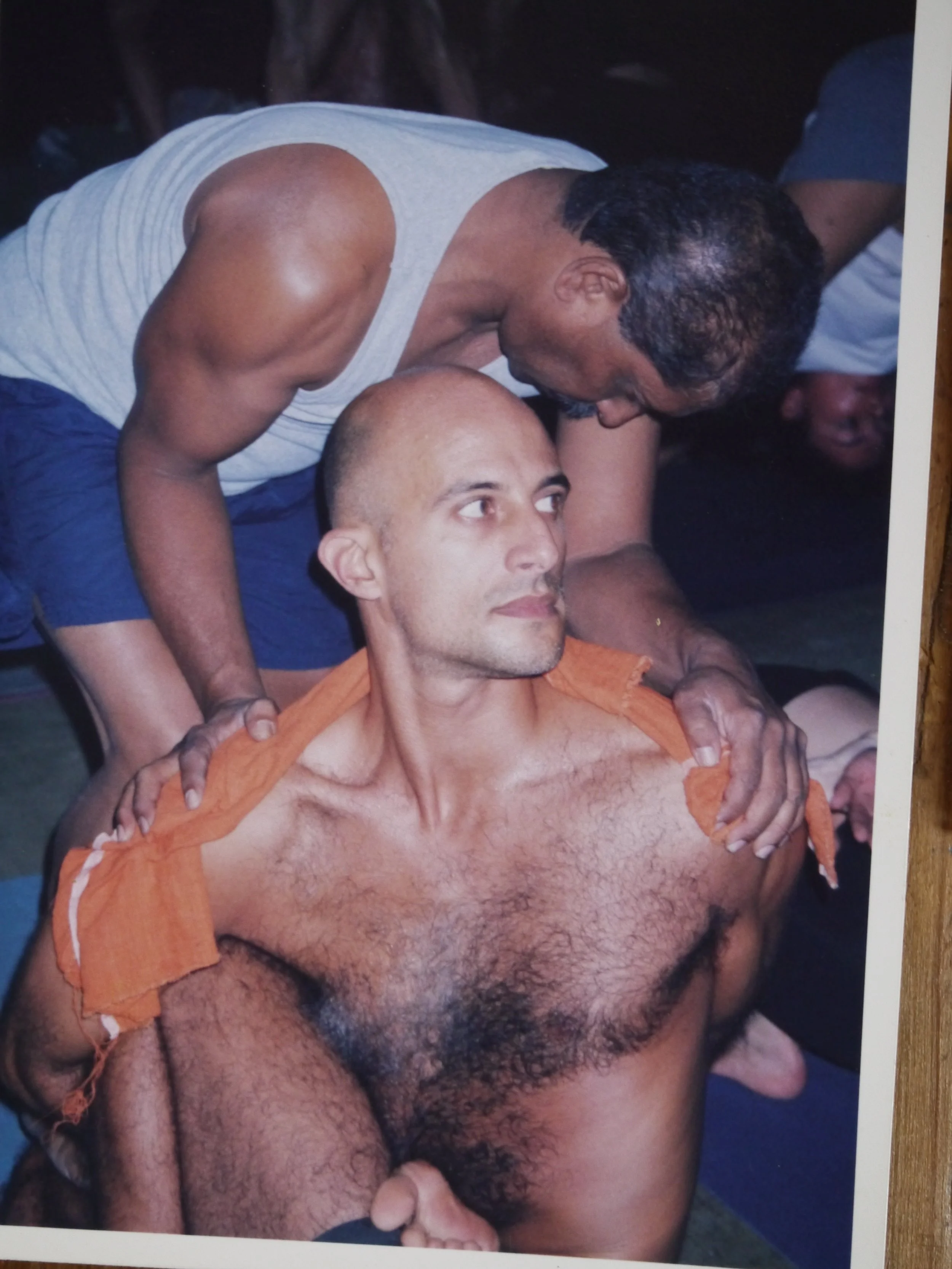Even Breathing, Equanimity and beyond
Breathing is affected by emotion. But breathing can be controlled in such a way as to moderate the intensity of feeling.
Many spiritual practices advocate a control or moderation of the emotional ups and downs of life. In order to see the causes of pain, we first need to calm the reaction to it, and then find ways to remove the cause. So a first step would be to gain a degree of equanimity - something that would help to reduce the intensity of affliction - this may be achieved through even breathing.
The day Pattabhi Jois “taught” me marichyasana D, dislocated my left knee and tore the meniscus, he made me promise to return to practice the following day.
“Breathe, trust me and relax” he said, as he put me into the pose for the second time, the next day. I had no idea if I would ever walk again and I allowed my mind to go blank, to surrender and just be with my breath for the duration of the adjustment. For those 30 seconds I was in an altered state of consciousness.
Later I limped, along with my fellow shala mates out of class. Each one of us was nursing pain inflicted on us by the practice. We had pain all day long and then for 30/40 minutes (we were beginners) we experienced some bliss as those tensions were released in practice until we crawled out of the shala again some time later.
Many of the classical texts give the impression that one should almost despise the body, at least be thoroughly detached from it and in some ways this intense practice with breathing does create a degree of detachment or equanimity, at least superficially.
The practice helps one develop a good physical and psychological armour that allows one to develop a degree of detachment. But although physical exercise is a good way to get rid of some tension from the body and tension from the mind, it only goes so deep. Much of the tension is just re-distributed but not eliminated. So the practitioner looks good, seems relaxed but is still afflicted by tension.
These tensions in the body are caused by the unconscious - the charged samskaras (memories) and vasanas (tendencies) - the conditioning that determines the way our individual minds work. These are not released by breathing and stretching. Until we excavate the unconscious, these tensions cannot be released, though one can moderate the intensity of emotion.
~
Breath training is invaluable (although they can inculcate bad habits that are very difficult to break). But beyond a certain point, controlling the breath, as in pranayama, itself is recognized as a disturbance to the meditative state it is designed to produce. An intentional breath is a vritti, a wrinkle in the mind.
If you just watch the breath it takes on a complete life of its own. There is no evenness of breath in meditation. It practically stops all motion.
But breath training and asana practice are invaluable to get to meditation and even after letting go of formal practice, the understanding and mastery one has gained over one’s body does not disappear.
For instance, instead of doing 100+ postures a day, I now do one. It’s not at all impressive, but I can sit comfortably for a long time. When I sit in that posture, if I become aware of tension or pain in any part of my body, I can release it.
Sometimes one can be aware that one side of the body is afflicted by tension or pain. At such times the breath will stop moving through one nostril. This imbalance can often be corrected by certain pranayamas - chandra or surya bhedena or nadi shodhona - these practices balance the body and eliminate those types of one-sided pains.
After years of pranayama practice, having let it go, once I decided to spend my practice time exclusively on meditation, I can easily move the breath back and forth between the nostrils - ie I can do the pranayamas without using my fingers to block the nostrils. This is a modest achievement and I do not mean to brag, but to offer encouragement.
There is a great fear attached to giving up asana practice. Once you have got a certain distance, you fear how much you will lose if you let it go. Pranayama gives you everything asana does +. Meditation gives you everything pranayama gave you ++. Of course it should logically be that way, otherwise why would one practice be considered more advanced than the former?
~
Remaining stuck in asana may be an excuse not to do the internal work that pranayama and meditation elicits. You do a pose and then you jump back and move on. You are never standing or sitting still. There are 98 positions that are held for 5 breaths or more in the Primary Series and there are 479 vinyasas. So, practically an even number of breaths in postures and in movement. There is no rest until shavasana.
But Pattabhi Jois often used to say that only one posture was necessary if it was perfect. The definition of perfection according to him is that you could stay in that position comfortably for 3 hours. That is my current (imperfect) practice.
